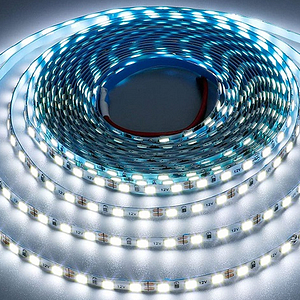
How to Fix Malfunctioning
Na Naučmese od 14. 10. 2023.
How to Fix Malfunctioning Swimming Pool Lights
If you’re dealing with broken swimming pool lights, don’t worry – you don’t have to drain your entire pool.
Instead, follow these step-by-step instructions to repair the lights without hassle. However, it is essential to prioritize safety.
Remember to exercise caution and take the necessary precautions to ensure a safe working environment.
Make sure to turn off the power at the main circuit breaker and keep it off while you perform the repairs.
Checking the GFCI
Before proceeding with any repairs, it’s crucial to check the Ground Fault Circuit Interrupter (GFCI) to rule out potential issues.
The GFCI acts as a sensitive circuit breaker, specifically designed to trip if it senses even the tiniest amount of electric current going to the ground.
>>> Read more: Illuminate Your Escape: Pool Lights Info for Homeowners
Its primary purpose is to prevent swimmers from experiencing electric shocks caused by faulty pool lights.
You can typically locate the GFCI by looking for an outlet with a test button. Here are the common places where you might find the GFCI:
Main panel box for your house.
Subpanel box at your pool filter system.
Electrical outlet near the pool.
Once you’ve identified the GFCI, check if it has tripped. With the pool light switch turned off, press the test button. If it pops, it means that there is power at that point, and it was initially on.
If it doesn’t pop, try pressing the reset button and see if it remains engaged. If it doesn’t hold or immediately trips again, it’s best to seek professional assistance from an electrician.
However, if the reset button holds, it’s time to test the pool lights.
Identifying the Issue
At this point, your pool light may come back on. In some cases, a small amount of water inside the light fixture could cause it to heat up and vaporize, triggering the GFCI to trip.
Similarly, extreme humidity can also cause GFCIs to trip. To prevent this, make sure to cover the outlets connected to the same GFCI circuit.
If, upon turning on the pool light switch, the GFCI trips, the most probable cause is water inside the light fixture.
On the other hand, if the GFCI doesn’t trip and the light remains off, the bulb is likely burned out.
In either scenario, you can proceed with removing the light fixture from the pool.
Removing and Replacing the Broken Pool Light Fixture
Before starting the removal process, ensure that the breaker, GFCI, and pool light switch are all in the off position. You can also place a piece of tape over the breaker as an extra precautionary measure.
To remove the light fixture, locate the small pilot screw positioned at the top of the fixture near the light lens.
Unscrew this pilot screw, ensuring not to confuse it with the screws that hold the light ring on a vinyl-lined pool.
For fixtures held in place by a clip, use a screwdriver to carefully pry it out, taking care not to damage the fixture or niche.
>>> Follow us to discover the Best 12v led strip lights
If the light cord is not long enough to reach the deck, you may need to go to the junction box where the cord is connected.
Disconnect the light cord at the junction box and attach a piece of wire or strong string to facilitate pulling the cord back later.
Remember, pool lights are designed to have water inside the niche, aiding in cooling the light and allowing for safe fixture removal.
With the fixture on the deck, proceed to open it. Depending on the type of fixture, there will either be screws around the back of the fixture rim or a single screw that tightens a band clamp holding it together.
After removing the clamp or screws, you may need to gently pry open the fixture, being careful not to break the lens.
Once the fixture is open, check for any water that may have caused the GFCI to trip.
If present, use a towel and/or hairdryer to dry out the inside of the fixture. Ensure that the bulb and connections are thoroughly dried as well.
Note that if you’re dealing with halogen bulbs, avoid touching them directly with your hands to prolong their lifespan.
After thorough drying, insert the bulb back into the fixture and briefly turn on the light.
Remember not to leave it on for an extended period, as it is designed to be cooled by water. This is also an opportune time to check if the bulb is burned out and needs replacing.
If the bulb is indeed burned out, replace it and test the light for a few seconds. If it works, you can proceed with reassembling the light fixture.
Ensure that the breaker, GFCI, and pool light switch remain off throughout the reassembly process.
Additionally, it’s always recommended to replace the light gasket to ensure a proper seal, considering that the high temperatures of the light can cause the gasket to conform to the fixture.
For fixtures held together by screws, tighten them evenly to avoid warping and improper sealing. In the case of clamp-type fixtures, tap around the ring as you tighten it to distribute pressure evenly.
Once reassembled, hold the fixture underwater and check for any bubbles coming from around the gasket. If bubbles appear, re-open the fixture, dry it out again, and reassemble.
Finally, return the fixture to the niche. For deep fixture lights, wrap the cord around the fixture and ensure that the notch at the bottom of the fixture aligns with the niche. Screw in the pilot screw or snap in the clip, depending on your fixture’s design.
>>> Follow us to discover Low voltage led light strips
If you had to disconnect the cord at the junction box, remember to pull the cord back while inserting the fixture.
Avoid splicing an extension to the cord since the conduit it goes through contains water, and the splice would be underwater.
If you need a longer cord, you’ll have to replace the entire light fixture since the cord is sealed during the manufacturing process.
Once everything is in place, turn the breaker and GFCI back on, and test the light. Congratulations! You’re now ready to enjoy your night swim.
FAQs
How do I troubleshoot swimming pool lights that are not working?
Start by checking the power supply and circuit breaker. Ensure that there is electricity reaching the pool light.
What are the most common reasons for swimming pool lights to malfunction?
Common reasons include burnt-out bulbs, faulty wiring, water infiltration, or problems with the pool light fixture.
Can I repair a malfunctioning pool light myself, or should I hire a professional?
It depends on your level of electrical expertise. If you’re not experienced with electrical work, it’s safer to hire a professional.
Are there safety precautions I should take when working on pool light repairs?
Always turn off power at the breaker, use waterproof tools, and ensure the pool area is dry before attempting repairs.
How do I identify if the issue is with the pool light bulb or the fixture itself?
Try replacing the bulb first. If that doesn’t solve the problem, the issue might be with the fixture or wiring.
What are the steps to replace a malfunctioning pool light bulb?
Turn off power, remove the fixture, replace the bulb, reseal the fixture, and test it before reinstalling.
Are there specific tools or equipment needed for fixing pool lights?
Waterproof wire connectors, wire strippers, and a voltage tester are useful tools for pool light repairs.
How can I prevent future malfunctions in my swimming pool lights?
Regular maintenance, such as cleaning and checking for water infiltration, can help prevent issues.
Are there energy-efficient options for pool lighting repairs?
Yes, consider upgrading to LED pool lights, which are energy-efficient and have a longer lifespan.
Where can I find resources or guides to help with pool light troubleshooting and repairs?
You can find online tutorials, manufacturer’s guides, or consult with pool professionals for guidance.
Conclusion
With a little know-how and caution, fixing broken swimming pool lights doesn’t have to be a daunting task.
By following these steps, you’ll be able to repair your pool lights without emptying your pool or hiring a professional.
Remember, always prioritize safety and seek assistance from a qualified electrician for complex issues. Now, go ahead and dive into a pool that’s beautifully illuminated once again!
